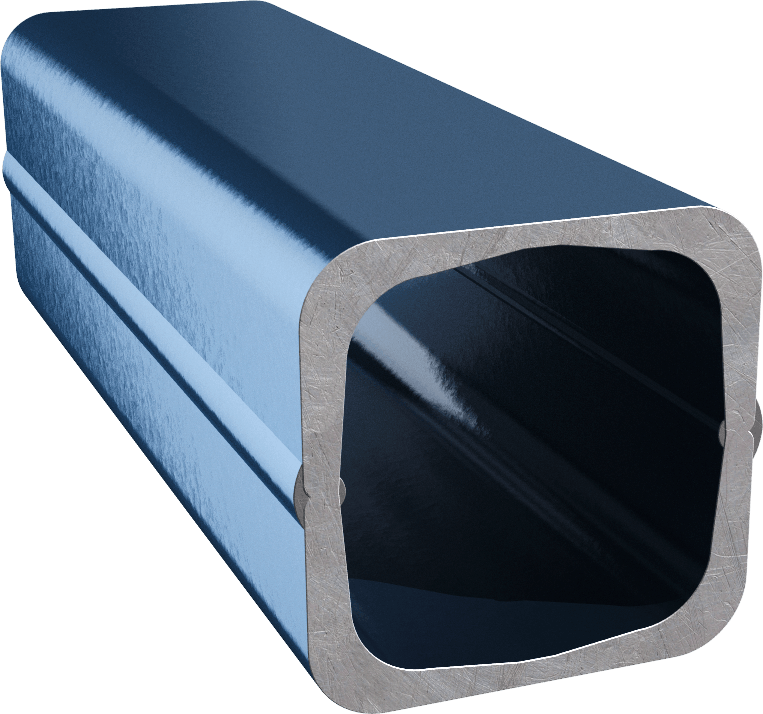BPW axle beams have been square from the very beginning. And for good reason. They offer extreme stability and highest reliability. This is BPW′s design principle which has proven itself in millions of applications. In combination with our brakes and suspension systems, the square axle beam provides a stable basis for a long vehicle service life. Along with the well-tried solid axle beams, BPW has also been manufacturing hollow axle beams for decades.
Solid axle beam
Hollow axle beam
BPW′s square hollow axle beam (used in axles GS11008/10 and GS12010/14010) consists of two specially rolled, high-quality half axle tubes (U-profiles), which are welded together both internally and externally. The special feature of the BPW standard axle tube is its profile shape. More material at the corner radii and less material in the upper and lower areas ensure the maximum service life of this shape.
As a result, axle cross sections are reinforced at the points where the load is applied and are optimally shaped to cope with the load. BPW axle tubes are available with various axle cross-sections and wall thicknesses to suit individual axle loads and operating conditions. The forged BPW axle stubs are quenched and tempered and have two stepped bearing seats.
Axle stubs and axle tube are butt-welded together to produce one piece – the BPW axle beam.
Axle stubs and axle tube are butt-welded together to produce one piece – the BPW axle beam. In this welding process, the axle tube and the ends of axle stubs are heated up to welding temperature by an electric current applied at their joining faces, whilst at the same time being forced together. This produces an absolutely homogenous connection without notch effect. In contrast to the conventional welding processes, no filter metals are needed. At the same time, the axle beam is given its camber and toe-in. Then the appropriate brake components are welded onto the BPW axle beams.
The most important technical data for the axle are the axle load, the brake version, the track 5 (SP), the spring centre 4 (FM) and the air cylinder bracket centre 3 (GM). The spring centre, for example, is the centre distance between the two spring pads and usually corresponds to the width of the trailer frame.






